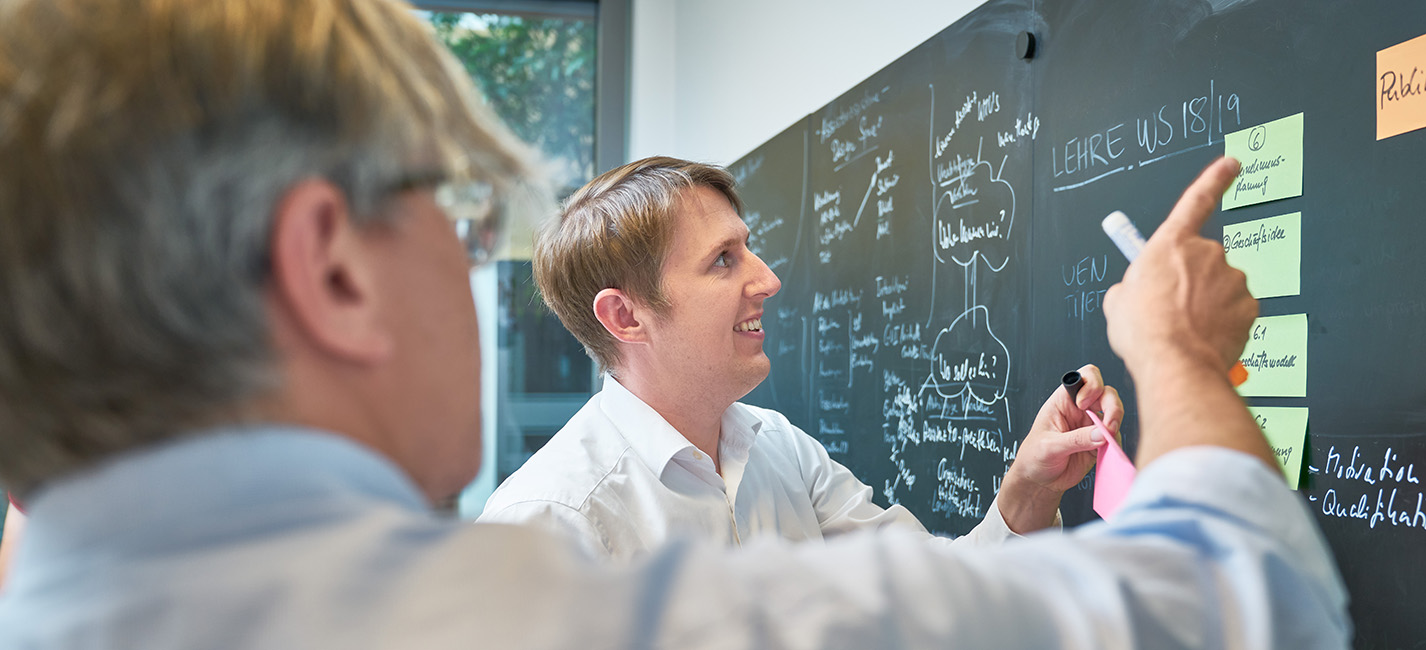Human Technology Interaction
Head Of
Employees
Student assistants
The way we interact with computers has significantly changed over the past years. Mobile devices have become a common part of everyday life. In their wake, people got used to new forms of interaction such as touch or gesture control. At the same time, the usability of consumer hardware and software has improved considerably. This will dramatically affect the development of technical systems, which people encounter at their workplace. Designing the human-machine interface will become increasingly important, because todays’ users take usability for granted and expect meaningful user experiences.
The research group “human-technology interaction” takes account of this fact by investigating the potential of interaction technologies for future technical systems in industrial contexts. This comprises the development of new interaction concepts as well as the evaluation of input and output technologies. A broad spectrum of methods is applied to accomplish this research.
Meanwhile, the main challenges arising from the context of industrial production can be extracted from two opposing trends:
On the one hand, the increasing degree of automation leads to a decreasing number of manually produced goods. As a result, human labour shifts from manual production towards operating complex machines. On the other hand, shorter innovation and product life cycles are accompanied by higher product diversity and smaller lot sizes. This in return decreases the cost-effectiveness of establishing complete automation of the manufacturing process. Hence, manual labour within complex technical systems will remain highly relevant.
Consequently, the goal of the research group “human-technology interaction” is to develop processes, methods, and tools facilitating the human-centred design of technical systems which support humans in their working environment, be it manual assembly activities or the operation of complex machinery. The investigation of new technology, i.e. technology that has just obtained market-readiness or shortly will do so, plays a central role in this endeavour.
For instance, Augmented Reality systems such as smart glasses offer numerous possibilities by blending digital information with the physical environment. Employing devices such as Microsoft’s HoloLens, relevant information can be brought directly into the user’s field of view while keeping his or her hands free. Pico-projectors or lasers are already able to do similar things turning physical objects into digital interfaces. Wearables such as smart watches, touch-based devices or indoor positioning systems further increase the number of possibilities. Using such technologies allows for developing and implementing technical systems, which can adapt to the needs of its users and their context of use.
But research does not stop here. Another question the research group is concerned with deals with asses- sing the efficiency of multimodal interaction in industry contexts. The increasing degree of automation decreases the amount of naturally interpretable feedback coming from the machine. While in the past operators could determine the state of a machine based on visual, haptic, auditory, and olfactory clues, nowadays the design of highly complex systems takes away most of these sensory channels and restricts it to visual information on displays and few acoustic signals. Here, multimodal interaction promises great potential in terms of designing systems, which are capable of dynamically adapting to the needs of its users.






